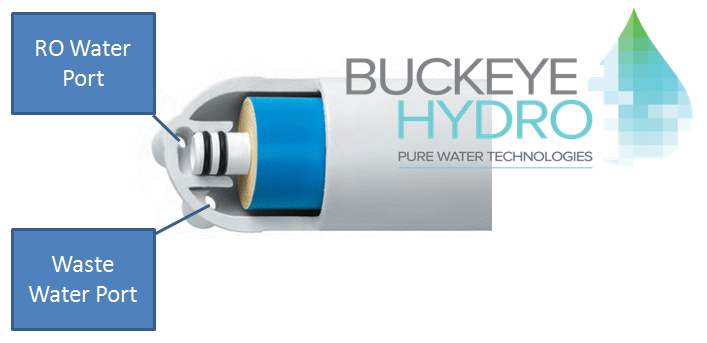Last week i replaced my RO membrane after observing my TDS had tripled over the past 2 months... I got 3 years out of it, not too bad for a $99 investment.
Since i bought some cheap Taiwanese parts originally, I decided this time i'd buy some better quality filters and membrane. I got a 1 micron pre-filter, 0.5 micron carbon filter, and another 0.1 micron carbon (for chloramine) filter. I also replaced the membrane with a Filmtec 100GPD and the correct flow restrictor for a 100 GPD.
Per the instructions i ran the system for an hour to flush it out. I pulled a sample at the end and was surprised to see the TDS was 20 PPM, which was higher than anything i'd ever seen before. I verified with 2 different meters and they were both reading close. This corresponds to a rejection of about 87%.
Today i went to run it again and gave my inline TDS system a check. Initially when I turned it on and the water was reading about 60ppm, and then quickly (less than a minute) had dropped to 4ppm. This i expected. However, by the time i had collected a gallon i was back up to 15ppm. This corresponds to only 93% rejection according to my inline meter.
I've never observed the TDS go up as the water was was collected, in fact, always the opposite.
I've got 75 psi at the inlet to the membrane and water temp is almost 80F.
Anyone have any thoughts what might going on?
Since i bought some cheap Taiwanese parts originally, I decided this time i'd buy some better quality filters and membrane. I got a 1 micron pre-filter, 0.5 micron carbon filter, and another 0.1 micron carbon (for chloramine) filter. I also replaced the membrane with a Filmtec 100GPD and the correct flow restrictor for a 100 GPD.
Per the instructions i ran the system for an hour to flush it out. I pulled a sample at the end and was surprised to see the TDS was 20 PPM, which was higher than anything i'd ever seen before. I verified with 2 different meters and they were both reading close. This corresponds to a rejection of about 87%.
Today i went to run it again and gave my inline TDS system a check. Initially when I turned it on and the water was reading about 60ppm, and then quickly (less than a minute) had dropped to 4ppm. This i expected. However, by the time i had collected a gallon i was back up to 15ppm. This corresponds to only 93% rejection according to my inline meter.
I've never observed the TDS go up as the water was was collected, in fact, always the opposite.
I've got 75 psi at the inlet to the membrane and water temp is almost 80F.
Anyone have any thoughts what might going on?



